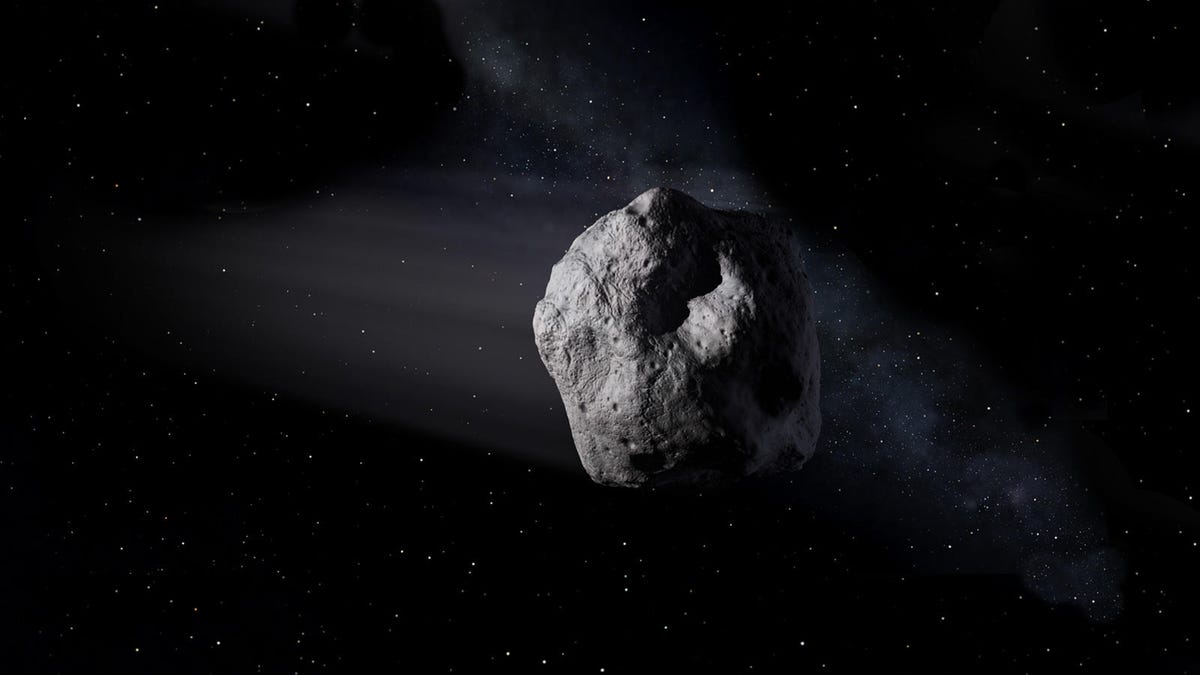Breathe! Elusive asteroid definitely won't hit Earth this year, ESA says
You can exhale now.

This NASA illustration shows a near-Earth object.
Asteroid 2006 QV89 just performed the cosmic equivalent of shouting "Boo!" It might have startled us, but it won't cause any real damage.
The European Space Agency said the asteroid had an extremely tiny 1-in-7,000 chance of impacting Earth in September when it visits our neighborhood. ESA has now adjusted that to zero.
Scientists first spotted the asteroid in 2006, but had only a short window of opportunity for observations, leaving us uncertain about its trajectory.
"We do know where it would appear in the sky if it were on a collision course with our planet. Therefore, we can simply observe this small area of the sky to check that the asteroid is indeed, hopefully, not there," ESA said in a statement on Tuesday.
ESA and the European Southern Observatory scanned that bit of sky and thankfully found no asteroid. This is the "first known case of ruling out an asteroid impact through a 'non-detection,'" ESA said.
The agency released an image of that section of sky showing the absence of the asteroid.
There's no asteroid here. The red crosses show where the asteroid would have appeared if it was on a collision course with Earth.
While 2006 QV89 is small at somewhere around 65 to 165 feet (20 to 50 meters) in diameter, it could potentially have a devastating effect along the lines of what happened when an asteroid exploded over the city of Chelyabinsk in Russia in 2013. That event caused over 1,200 injuries and extensive damage to buildings.
Our sigh of relief at not being in the asteroid's path can continue for many years. ESA says any chance of future impact is extremely remote.

